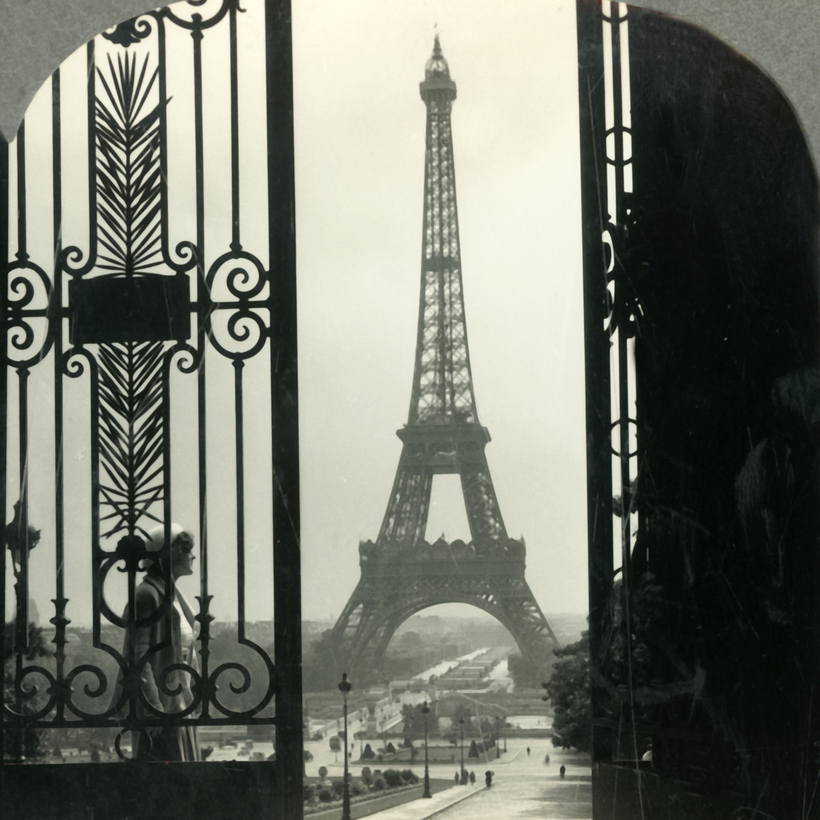Since its completion in 1889 the Eiffel Tower has dominated the Paris skyline and become the unmistakable symbol of the French capital. But did its creator decide to build it only after a chance reunion with a beautiful woman with whom he had once pursued a doomed love affair?
That, at least, is the premise of a biopic about Gustave Eiffel, Adrienne Bourgès and a 1,000ft metal pyramid that is due to woo French cinemagoers this summer when the tower, which has served as the backdrop for countless films and television shows, finally becomes a movie star in its own right.
“This is about a love story that triggers the drive to build the tower,” Caroline Bongrand, the writer who first came up with the idea for the film more than 20 years ago, told me recently. “But Eiffel is also an engineer who loves a challenge and is obsessed with his project and wants to realize it, whatever the risk and the consequences.”
Eiffel’s initial lack of enthusiasm for what was to become his famous creation is well documented. By then in his late fifties and at the height of his career, he had built countless bridges, tunnels and public buildings across the world and devised the central pillar of the Statue of Liberty in New York. Putting up a temporary structure to act as the entrance to the Exposition Universelle marking the 100th anniversary of the French Revolution held little appeal for him.

Yet something then happened to fire Eiffel’s enthusiasm. Rejecting the design by two of his right-hand men for a simple pylon-like structure, he ordered radical revisions and came up with the now familiar shape for the tower, which for four decades was the tallest building in the world until the Chrysler Building in New York stole its crown.
Eiffel’s many biographers have long puzzled over what could have prompted his sudden change of heart, but Bongrand, a novelist who wrote the screenplay for the film, Eiffel, has come up with the most quintessentially French explanation: love.
Eiffel had met Bourgès more than a quarter of a century earlier in her native Bordeaux, when she was 17 and he was a young engineer who had come to the city to work as construction chief on a project to build an iron railway bridge across the Garonne river.
Did its creator decide to build it only after a chance reunion with a beautiful woman?
Their relationship blossomed and they were due to be married, but it was called off at the last moment by Bourgès’s father, a wealthy wood merchant, who was convinced Eiffel was not a good enough match for his daughter. “He was heartbroken but also seriously humiliated,” Bongrand said. “Everything that happened afterwards flowed from that. It was not so much that he wanted revenge but wanted to prove to the world what he could do.
“After that, he wrote to his mother and said, ‘That’s it for me. Just find me a nice girl with a good character, who is well-behaved and simple. I don’t have to fall in love with her. I just want to get married’.”
In 1862, Eiffel married Marguerite Gaudelet, who bore him five children but died 15 years later. Wealthy and successful and still only in his mid-forties, he never remarried. His eldest daughter, Claire, became a surrogate mother to her siblings and later served as her father’s private secretary.
It’s at this point that Bongrand invents a meeting between Eiffel and Bourgès, who had also married in the meantime and whose husband was very much still alive. In her telling, it is Eiffel’s desire to impress his former love that convinces him to build the tower. In a further flight of fancy, she suggests its A-shaped structure was a tribute to Bourgès’s first name — Adrienne.

Eiffel’s creation has long been the world’s most visited tourist attraction. Getting the film made took considerably longer than building the tower itself, which was completed in two years, two months and five days.
As Bongrand describes in her book, Eiffel et Moi, which came out last month, she first had the idea in the mid-1990s when she was studying at the USC School of Cinema-Television in Los Angeles, but although several producers and directors considered the project, they all walked away, largely because of the cost. There was also, she says, a certain snobbishness towards the subject.
“It was too obvious and probably people didn’t dare,” she said. Marion Cotillard, one of the actresses who turned down the role of Bourgès, said making a film about the landmark was “totally tacky and cheesy”.
Countless rewrites later, the film was finally made last year, with Martin Bourboulon directing. The final scenes were shot in the summer during the lull between the first and second waves of Covid; Eiffel is played by Romain Duris, and Bourgès by Emma Mackey, who was born in France but is best known in the English-speaking world for her role as Maeve Wiley in the popular Netflix series Sex Education.
At $29.8 million, the budget was modest by Hollywood standards. Much of the money went on building a life-size replica of one of the tower’s giant feet, which was then duplicated using special effects.
For Bongrand, the overwhelming feeling is relief that her vision is at last making it to the screen. “I’ve been haunted by this script and getting it made into a movie,” she said. “But you know what? History has finally proved me right.”
Peter Conradi is the author of The Red Ripper and Hitler’s Piano Player
